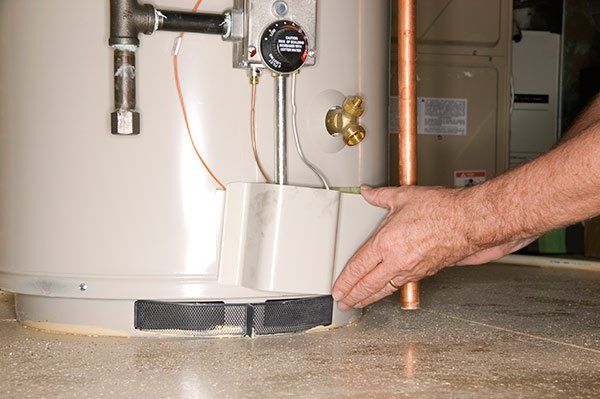The Anode Rod In Your Water Heater | Daytona Plumbing
Admin • June 24, 2017

A water heater is one of the most heavily used appliances in a home. Not only must it meet your hot water needs in the kitchen and the bathroom, but it also has to supply appliances such as dishwashers and washing machines. The constant demands being placed on a water heater can thus cause it to experience all sorts of troublesome problems.
A surprising number of water heater ailments stem from the component known as the anode rod. If you would like to learn more about the anode rod, as well how to recognize the signs that your anode rod may be experiencing problems, read on. This article will provide a useful introduction to the role of this component within your water heater.
A surprising number of water heater ailments stem from the component known as the anode rod. If you would like to learn more about the anode rod, as well how to recognize the signs that your anode rod may be experiencing problems, read on. This article will provide a useful introduction to the role of this component within your water heater.
Internal Corrosion
Without a doubt, the single greatest enemy of a water heater is corrosion. This of course is a direct result of the fact that the inside of a water heater is exposed on a continuous basis for years and years on end. As a result of this constant exposure, the steel walls of the tank are put at a huge risk of oxidation. This chemical process strips the steel of its electrons, thus allowing so-called hydroxide ions to form.
The formation of hydroxide ions is the natural precursor to the development of rust. Once this type of corrosion has set in, it will only grow worse and worse with time. Eventually it will cause the walls of the tank to become so excessively weak that they either collapse or rupture. Needless to say, both of these scenarios are highly catastrophic--and highly dangerous.
Anode Rod
Here is where the anode rod enters the picture. The anode rod's purpose is simple: to present such an appealing target for corrosion that the walls of the tank are left unscathed. In other words, the anode rod is gradually destroyed in place of the tank itself. For this reason, anode rods also frequently go by the name of sacrificial rods.
Over time, corrosive elements inside of the tank will chew down the anode rod further and further, until eventually it will have all but disappeared. At this point, unless you have a fresh anode rod installed, the corrosion will then begin to attack the walls of the tank. For this reason, it is vital that you have your anode rod inspected and serviced on a regular basis.
The typical anode rod can be expected to protect your water heater from corrosion for four to five years before it will have virtually disappeared. The precise length of service is difficult to pin down beyond this general span. That's because the rate of wear will also depend on factors such as the construction of the particular anode rod, the hardness of your water supply, and the amount of use the tank gets.
Recognizing The Problem
One of the tricky things about anode rods is that it is not always easy to tell when they have reached the end of their lifespan. That said, there is one strong sign you should be aware of: rust in your water. If you have noticed tiny bits of rust in your hot water, there is a good chance that the problem is tied to corrosion inside of your water tank. Be sure to contact a reputable plumbing company as soon as possible to come and inspect your anode rod.
Rod Inspection
To determine the state of your anode rod, an experienced plumber must physically remove it from the tank. This requires cutting off the power supply, allowing the tank to completely cool, and the using a wrench to unscrew the nut at the top of the tank that holds the anode rod in place.
The anode rod is then carefully lifted upward out of the hot water heater. An experienced plumber will be able to judge from a glance whether the anode rod has reached the end of its lifespan. In general, if more than six inches of the steel wire at the center of the rod are visible, your best bet will be to have a new rod installed right away.






